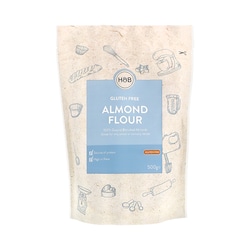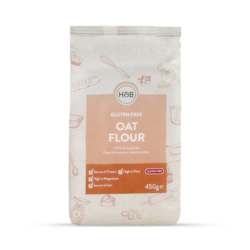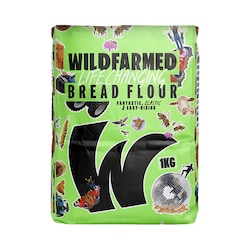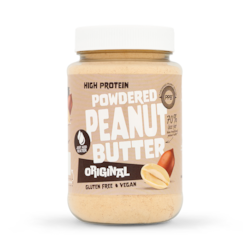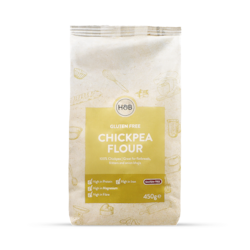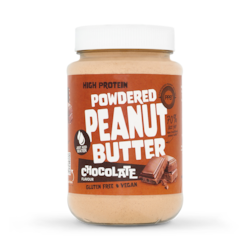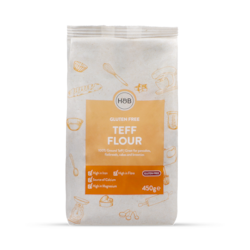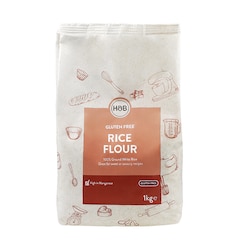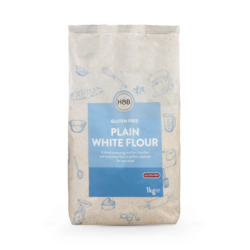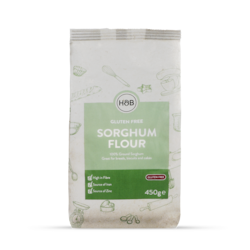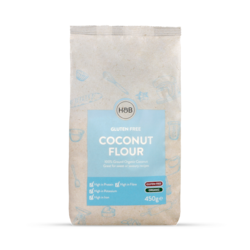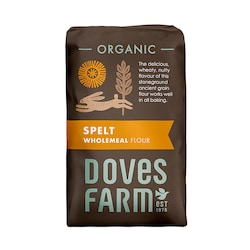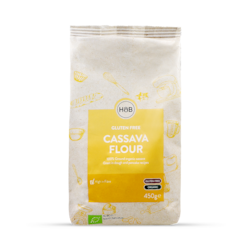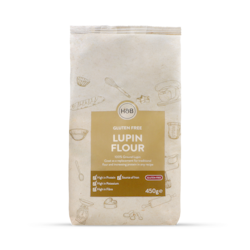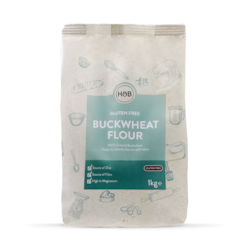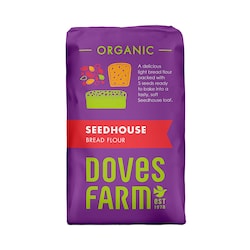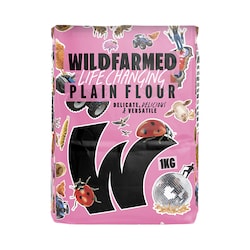15% off £25 OR 20% off £35
What is almond flour? Nutrition, calories, benefits & recipes
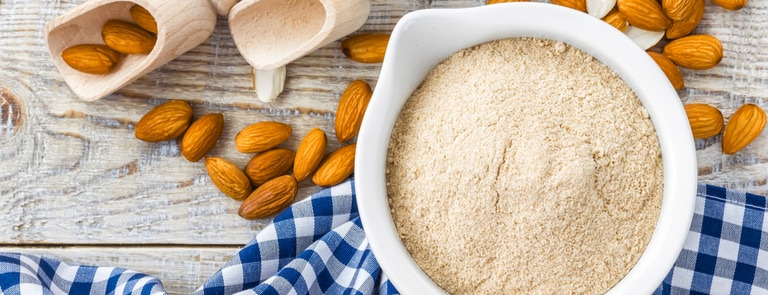
People are increasingly searching for alternatives to traditional wheat flour.
This could be down to a wider understanding of food intolerances, a desire to eat fewer carbs or a result of home cooks seeking to increase the nutritional value of their bakes.
Because of these reasons, and many more, almond flour is firmly in the spotlight as a ‘healthy’ flour alternative.
But you probably have some questions, right?
For example, is almond flour healthier than regular flour? How do you bake with almond flour? Does almond flour have sugar?
We have all the answers. Keep reading….
What is almond flour?
Almond flour is a fine powder made from ground almond nuts.
It’s often used to replace wheat flour in baking, cooking and sauces to make dishes gluten-free.
Almond flour is more nutrient-dense than regular wheat flour and contains more fibre and protein than most common flour.
What are the different types of almond flour?
Almond flour nutrition
Almond flour’s nutritional profile is pretty impressive. Not only does it contain more protein than regular flour, but it’s also grain-free and contains fewer carbs than white flour.
It also happens to taste ever so slightly nutty, making it ideal for baking bread and cakes, with many people saying it adds a richer taste than other flour.2
One ¼ cup of almond flour contains:
- Almond flour calories: 170
- Fat: 15g
- Saturated fat: 1g
- Protein: 24g
- Almond flour carbs: 6g
- Fibre: 2g
- Sugar: 1g
- Sodium: 0mg
- Calcium: 66mg
- Iron: 1mg
- Potassium: 190mg
When you put almond flour’s nutritional profile next to that of your standard white wheat flour, almond flour may contain more fat, fibre and protein, but that’s alongside fewer carbs and more healthy ‘extras’, such as vitamin E, magnesium and niacin.
Handpicked content: Why your body – and beauty – needs vitamin E
How healthy is almond flour?
Almond flour is packed with nutrients, vitamins and minerals that make it a healthy addition to your daily diet, especially when compared to the likes of standard white wheat flour.
10 almond flour benefits
As almond flour is made with 100% blanched almonds, it contains all the goodness of this super nut including:
-
Vitamin E
Almonds themselves are rich in vitamin E – a powerful antioxidant that can help minimise disease-causing oxidative damage to cells.3
100g almond flour contains a whopping 23.9mg of vitamin E – 159% of your recommended daily amount of vitamin E.4
-
Magnesium
Magnesium helps us convert food into energy and is important for bone health.5
Almond flour has plenty, with 279.0mg per 100g. That’s 66% of your daily value.6
-
Fibre
Higher in fibre than most other flours, almond flour boasts 14g fibre per 100g, more than brown rice flour, whole wheat flour and buckwheat flour.7
Fibre is important for healthy digestion and gut health.
-
Manganese
With 2.2mg per 100g (97% of your recommended daily amount), almond flour has lots of this trace mineral.8
Manganese is important for energy, as well as bone and connective tissue health.9
-
Calcium
A vital mineral for all stages of life, calcium is needed for strong bones, blood flow and muscle contraction. 100g almond flour provides 271mg of calcium.10,11
-
Potassium
Needed for cell communication and a healthy heart, potassium is found in high levels within almond flour, with around 736mg per 100g – 16% of your recommended daily amount.12
-
Complex carbohydrates
Lower in carbohydrates than other flour, almond flour is a great alternative to wheat flour for those looking to follow a low-carbohydrate or ketogenic diet.
With just over a quarter of the carbohydrate content of wheat flour, almond flour has 21g of carbohydrates per 100g.13
-
Healthy fats
Almond flour - like almonds themselves – is a rich source of unsaturated fat with 50g of unsaturated fat per 100g. This type of fat is known to have heart-protecting benefits.14
-
Protein
With more protein than other flour, almond flour is the clear choice if you’re trying to increase your intake of vegetarian protein.
Almond flour contains 21g of protein per 100g, which means your cakes, bread and other bakes will be far higher in protein than if you used regular flour, or even other gluten-free flour types (excluding coconut).15
-
Blood sugar
Almond flour is also a good choice for balancing blood sugar.
Wheat flour, like all simple carbohydrates, has a high glycaemic index (GI) and is rapidly converted to glucose in the body. This elevates the levels of glucose in the blood – also known as our blood sugar.
Blood sugar levels that are consistently too high can lead to health problems over time.16
Unlike wheat flour, almond flour is a low glycaemic index (GI) food meaning it is converted to glucose more slowly in the body. This means it won’t cause an elevation in the blood glucose, minimising harmful spikes.17
Foods made with wheat flour, such as cakes, cookies and breads, can be made better for our blood sugar by switching their usual wheat flour for almond flour.
4 almond flour side effects
While almond flour is widely regarded as being a healthier flour option, there are some side effects to eating it, especially on a regular basis. We’ve listed some of the more common side effects below:18
-
General nut allergies
If you are allergic to nuts, or almonds in particular, you should steer clear of almond flour due to the almond content.
The side effects of eating nuts when you are allergic to them can range from minor issues, such as itching and rashes, to serious, life-threatening issues, such as anaphylaxis, which impacts your breathing.
-
Weight gain and associated risks
Almond flour is higher in both calories and fat than other flours.
Although the fat in almond flour is primarily the unsaturated ‘good’ type, which can help protect heart health, eating too much almond flour will still lead to weight gain and the associated risks over time.
-
Allergies caused by almonds
Eating too many almonds a day can potentially lead to you developing allergies. To help avoid this, soak your almonds overnight and only eat around 10 to 15 almonds a day.
-
Gastrointestinal issues
Eating lots of almonds could result in you taking on too many minerals and vitamins that could lead to health problems, such as sickness, abdominal pain, diarrhoea and constipation.
Summary
- Almond flour is a fine powder made from ground almond nuts
- Almond flour contains more nutrients than wheat flour
- It contains fibre, protein, healthy fats, vitamin E, manganese, potassium and complex carbs
How healthy is almond flour compared to other flours?
Almond flour has a host of health benefits, but how does it measure up against other popular flour? 19 20 21
| Flour (100g) | Calories | Fat | Saturated Fat | Carbs | Sugar | Fibre | Protein | Iron |
|---|---|---|---|---|---|---|---|---|
| Almond | 571kcal | 50g | 3.6g | 21g | 7.1g | 14g | 21g | 3.57mg |
| White wheat | 364kcal | 1g | 0.2g | 76g | 0.3g | 2.7g | 10g | 1.17mg |
| Whole grain wheat | 340kcal | 2.5g | 0.4g | 72g | 0.4g | 11g | 13g | 3.6mg |
| Semolina | 357kcal | 1.2g | - | 74g | 2.4g | 4.8g | 12g | 3.43mg |
| Buckwheat | 335kcal | 3.1g | 0.7g | 71g | 2.6g | 10g | 13g | 4.06mg |
| Brown rice | 363kcal | 2.8g | 0.6g | 76g | 0.7g | 4.6g | 7.2g | 1.98mg |
| White rice | 359kcal | 1.3g | - | 80g | 0.1g | 0.5g | 6.9g | 0.22mg |
| Coconut | 400kcal | 13g | 13g | 60g | 20g | 33g | 20g | 6.67mg |
| Tapioca | 349kcal | 0.2g | - | 85g | 3.5g | 0g | 0.6g | 1mg |
| Soya (defatted) | 330kcal | 1.2g | - | 38.4g | 18.9g | 17.5g | 47g | 9.2mg |
| Corn | 361kcal | 3.9g | 0.5g | 76.8g | 0.6g | 7.3g | 6.9g | 2.4mg |
| Quinoa | 368kcal | 7.5g | 1.6g | 69g | 3.6g | 7g | 10g | 4.8mg |
10 uses of almond flour
- Almond flour cookies
- Almond flour pastry
- Almond flour bread
- Almond flour cake
- Almond flour brownies
- Almond flour sauces
- Almond flour curry
- Almond flour pasta
- Almond flour smoothie
- Almond flour flatbread
Almond flour FAQs
Food made with almond flour tends to have a nuttier taste and thicker texture compared to foods made with wheat flour.
Almond flour has also been described as being sweeter and creamier-tasting than regular flour. Don’t worry though, using almond flour doesn’t make your food taste overwhelmingly of nuts!
Yes. However, you will need to bear some things in mind when it comes to the way almond flour affects certain dishes.
You can’t simply switch wheat flour for almond flour like-for-like in a baking recipe, for instance, because it doesn’t offer the same texture as wheat flour. (More on this below).
Yes, it is.
Almond flour doesn’t contain any grains, which is where the gluten comes from in other flours that are made using grains. As well as being gluten-free, almond flour is paleo (in which people eat lean meat, fish, fruit, vegetables, nuts and seeds), meaning you can eat almond flour if you have celiac disease or gluten sensitivities.
Almond flour makes bakes slightly denser and heavier than those made with wheat flour. This is due to the absence of gluten – the sticky substance responsible for that stretchy, pliable dough we see in traditional breadmaking.
When combined with yeast and baked, gluten forms tiny carbon monoxide pockets, which inflate under heat, offering structure and springiness, which almond flour bakes can lack.
It’s not just almond flour, either – many gluten-free flours pose this dilemma.
To make almond flour bread, you will need to add yeast to ensure it rises. Some people find that using a blend of non-wheat flours helps the bread rise rather than using almond alone. Find out more about baking with gluten free flour here.
Almond flour contains fibre and protein, both of which can support weight loss by helping us feel full for longer. It’s higher in calories than wheat flour though, so don’t go overboard! Almond flour in moderation is what you should be aiming for.
Almond flour can be found in some large supermarkets, as well as online.
Shop almond flour.
Almond flour recipe
Looking for an almond flour recipe?
Here are three of them for you to try! Our in-house Nutritionist, Alexander Thompson, has shared 3 unique almond flour recipes for you down below:
Quorn Passanda
This curry is popular in Northern India, and uses ground almond powder to make it deliciously thick, rich and creamy.


Ingredients
For the marinade:
- Approximately 600g of Quorn fillets or pieces
- 1 tbsp coriander seeds
- 6 peppercorns
- ½ tsp turmeric
- 1 tsp chilli powder
- 1 tsp garam masala
- 1 tsp salt
- 5 tbsp yoghurt or alternative
- 1 tbsp gram flour
For the sauce:
- 1-2 tbsp coconut oil
- 1 cinnamon stick
- 2-3 green cardamom pods
- 1 small onion, finely chopped
- 3cm piece fresh ginger, grated
- 2 garlic cloves, finely chopped
- 1 tomato, blended to a purée
- 1 tsp salt
- 3 tbsp almond flour
- Handful of fresh coriander, chopped
- 6 peppercorns
Method
- Add the coriander seeds and peppercorns to a pestle and mortar and crush, then transfer to a large bowl.
- Add turmeric, chilli powder, garam masala, salt and yoghurt, and fully combine. Add the Quorn, mix well and leave for 30 minutes.
- Heat the coconut oil in a large heavy pan, add the cinnamon stick and cardamoms, stir until fragrant then add the chopped onion and cook for a few minutes.
- Add the ginger and garlic, stir and cook for 5 minutes on low heat, stirring now and again to make sure nothing browns or burns.
- Add the tomato purée and stir through. Leave to cook on a gentle heat for about 5 minutes.
- Add a little water to 3tbsp of the almond flour to make an almond paste, add this to the sauce and stir. Let this thicken for a few minutes.
- Then add the marinated Quorn and leave it to simmer gently for 15-20 minutes. If the sauce gets too thick just add a little hot water – you should end up with a thick, creamy sauce.
- To finish sprinkle with some fresh coriander and then serve.
Almond Flour Cake
This almond flour cake is wonderfully simple, and is sure to go down a treat.


Ingredients
- ½ tbsp of coconut oil
- 4 large eggs or 4 teaspoons of Ogran No Egg Repacer
- 70g of Total Sweet Xylitol
- 1 tbsp vanilla extract
- 200g almond flour
- ¼ tsp salt
- ½ tsp baking soda
Method
- Preheat your oven to 175 degrees C. Generously grease an 8-inch non-stick cake pan with coconut oil.
- In a large bowl, lightly whisk the eggs (if using). Then gradually combine the eggs or Ogran egg replacer with the xylitol, vanilla, almond flour, salt and baking soda.
- Use a spatula to transfer the batter into the prepared pan.
- Bake until fragrant and set and a toothpick inserted in the centre comes out clean. This should take about 25 minutes.
- Cool the cake, in the pan on a cooling rack, for 10 minutes. Then invert it onto the cooling rack and cool for 20 more minutes before slicing and serving.
Strawberry, Banana and Almond Smoothie
Try this delicious fruit and almond smoothie as a nourishing breakfast to start your day.


Ingredients
- 1 small ripe banana
- 7 strawberries- fresh or frozen
- 3 tbsp yoghurt or soya yoghurt alternative
- 3 tbsp milk or dairy alternative (e.g. soya milk)
- 2 tbsp almond flour
Method
- Slice the banana into the bowl of a food processor, or a jug if using a hand blender.
- Add the strawberries, yoghurt, milk and ground almonds, and blitz until completely smooth.
- Pour into a glass and enjoy!
Takeaway
Almond flour is a superb flour alternative, providing you aren’t allergic to nuts.
It’s rich in flavour and you can pretty much use it for most, if not all, of your baking (just watch those measurements because they will need to be adjusted!), as well as cooking.
Almond flour also happens to be grain-free, which automatically makes it gluten-free.
But there is a ‘but’…..Almond flour contains more fat, fibre and protein than most regular flour, which means it’s best to use it in moderation; although it does also mean it helps you feel fuller for longer!
There are lots of pluses to incorporating this particular flour into your diet, especially all those extra minerals and the vitamin E boost, so why not give one of the recipes up above a go and see what you make of it?
Seeing as we’ve caught you thinking about flour alternatives, want to know more about tapioca flour? Have a read of this, ‘You ultimate guide to tapioca flour + 8 top uses.’
The advice in this article is for information only and should not replace medical care. Please check with your GP or healthcare professional before trying any supplements, treatments or remedies. Food supplements must not be used as a substitute for a varied and balanced diet and a healthy lifestyle.
Last updated: 3 March 2022
- https://www.diabetes.co.uk/food/low-carb-flour.html
- https://www.womenshealthmag.com/food/a30667380/almond-flour-nutrition/
- https://www.ncbi.nlm.nih.gov/pmc/articles/PMC2040110/
- https://nutrientoptimiser.com/nutritional-value-nuts-almonds-dry-roasted-without-salt-added/
- https://www.nhs.uk/conditions/vitamins-and-minerals/others/
- https://nutrientoptimiser.com/nutritional-value-nuts-almonds-dry-roasted-without-salt-added/
- https://nutrientoptimiser.com/nutritional-value-nuts-almonds-dry-roasted-without-salt-added/
- https://nutrientoptimiser.com/nutritional-value-nuts-almonds-dry-roasted-without-salt-added/
- https://www.mountsinai.org/health-library/supplement/manganese/
- https://www.nof.org/patients/treatment/calciumvitamin-d/
- https://nutrientoptimiser.com/nutritional-value-nuts-almonds-dry-roasted-without-salt-added/
- https://nutrientoptimiser.com/nutritional-value-nuts-almonds-dry-roasted-without-salt-added/
- https://www.nutritionvalue.org/Rice_flour%2C_brown_nutritional_value.html
- https://www.ncbi.nlm.nih.gov/pmc/articles/PMC5001225/
- https://nutrientoptimiser.com/nutritional-value-nuts-almonds-dry-roasted-without-salt-added/
- https://www.ncbi.nlm.nih.gov/pmc/articles/PMC5537883/
- https://www.ncbi.nlm.nih.gov/pmc/articles/PMC3042001/
- https://www.lybrate.com/topic/almond-benefits-and-side-effects
- https://www.nutritionvalue.org/Rice_flour%2C_brown_nutritional_value.html
- https://nutritiondata.self.com/facts/legumes-and-legume-products/4384/2
- https://www.fatsecret.co.uk/calories-nutrition/holland-barrett/quinoa-flour-power/100g


